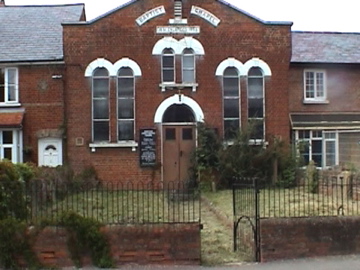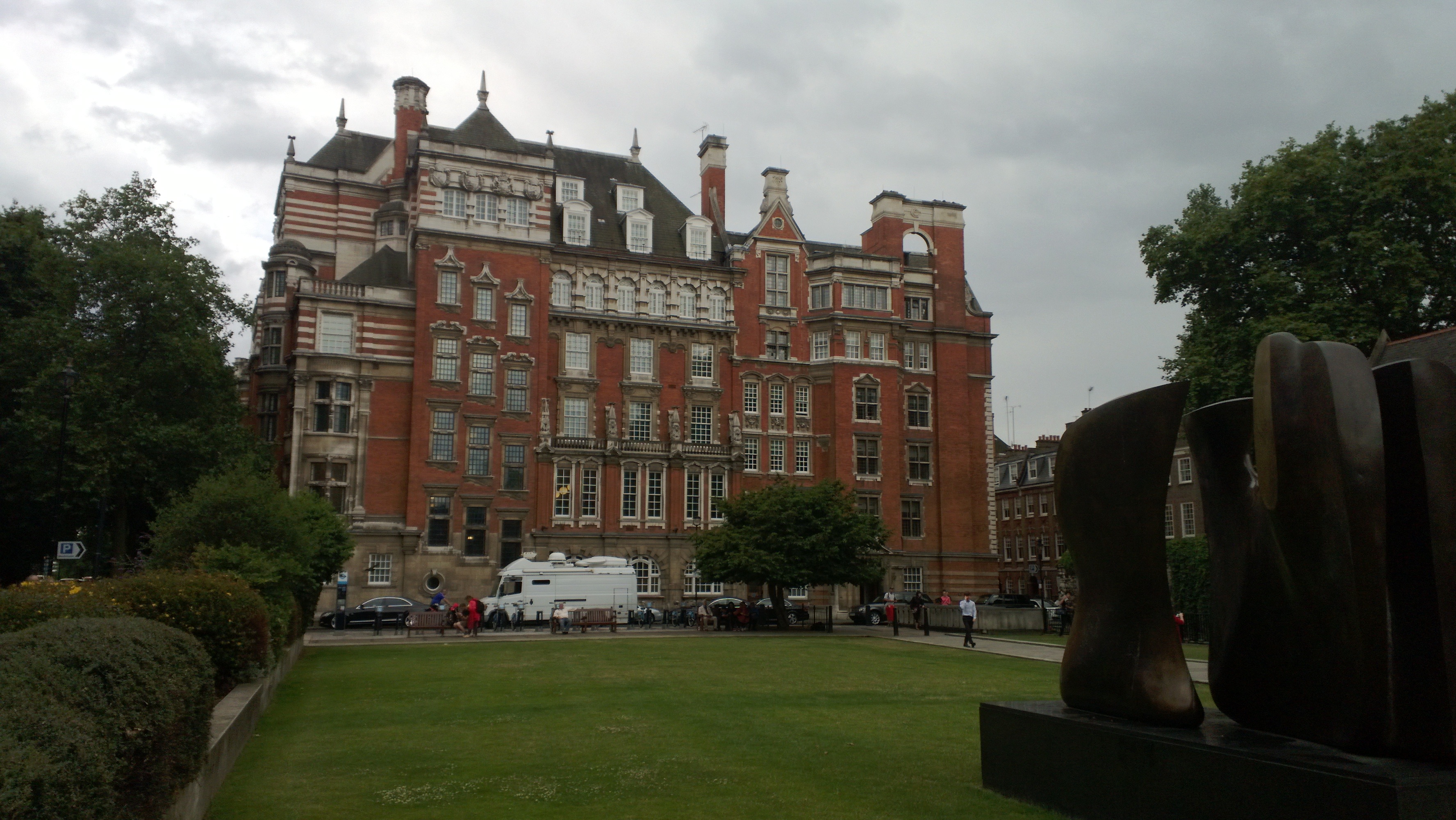|
Broughton, Aylesbury
Broughton is a hamlet and civil parish to the east of Aylesbury in Buckinghamshire, England. Broughton is also the name of a nearby housing estate in Aylesbury itself. Early recordings of Broughton are: - the Domesday Book where it appears as "22 households (quite large)" - as being part of the manor of Bierton in the late 13th century. The hamlet name is Anglo-Saxon and means ''farm by a brook''. The brook in this case is the Bearbrook that rises near Bedgrove, flows through Broughton then back into Aylesbury before joining the River Thame near Quarrendon. In the 1840s, a new branch railway was constructed linking Aylesbury to the Midlands that crossed the road that linked Broughton with Bierton. A public house and signalmen's cottages were constructed at the level crossing and the area became known as Broughton Crossing. Today, this is considered a separate hamlet from Broughton itself. In 1870–72, John Marius Wilson described Bierton With Broughton like this: ''BIERTON ... [...More Info...] [...Related Items...] OR: [Wikipedia] [Google] [Baidu] |
Buckinghamshire Council
Buckinghamshire Council is a Unitary authorities of England, unitary Local Government in England, local authority in England, the area of which constitutes most of the ceremonial county of Buckinghamshire. It was created in April 2020 from the areas that were previously administered by Buckinghamshire County Council including the districts of South Bucks, Chiltern District, Chiltern, Wycombe District, Wycombe and Aylesbury Vale; since 1997 the City of Milton Keynes has been a separate unitary authority. History The plan for a single unitary authority was proposed by Martin Tett, leader of the county council, and was backed by Secretary of State for Housing, Communities and Local Government, Communities Secretary James Brokenshire. District councils had also proposed a different plan in which Aylesbury Vale becomes a unitary authority and the other three districts becomes another unitary authority. The district councils opposed the (single) unitary Buckinghamshire plan. Statutory ... [...More Info...] [...Related Items...] OR: [Wikipedia] [Google] [Baidu] |
Quarrendon (village)
Quarrendon or Quarrendon Leas is a medieval English village near Aylesbury in Buckinghamshire, England, which has been depopulated since the 16th century and is now a scheduled monument. Description Quarrendon's site is now a large area of fields and riverside meadows that provide green space between modern housing developments on the outskirts of the town of Aylesbury. Visible in these fields and meadows are the remains of a medieval village, a church, a manor house and its moat and a Tudor water garden. These historic features are now nationally-protected as a scheduled monument. The area also has wildlife value with a mixture of habitats and the River Thame forming the southern boundary of the site. The deserted village The layout of the village of Quarrendon in the late middle ages is preserved among the earthworks which can be seen in the area today. At this time the village consisted of farmsteads which were clustered around irregularly shaped greens, linked to each other, ... [...More Info...] [...Related Items...] OR: [Wikipedia] [Google] [Baidu] |
Kingsbrook, Buckinghamshire
Kingsbrook is a village and civil parish to the east of Aylesbury in Buckinghamshire, England. The village comprises mostly new build housing in the "Oakfield Village", "Canal Canals or artificial waterways are waterways or engineered channels built for drainage management (e.g. flood control and irrigation) or for conveyancing water transport vehicles (e.g. water taxi). They carry free, calm surface flow un ... Quarter" and "Orchard Green" neighbourhoods. Its primary school opened in September 2021 and the secondary school opened the following year. The parish was established in 2020 when the former parish of Bierton with Broughton was divided into three.Kingsbrook Parish Council https://www.kingsbrookpc.co.uk/the-council References Civil parishes in Buckinghamshire {{Aylesbury Vale ... [...More Info...] [...Related Items...] OR: [Wikipedia] [Google] [Baidu] |
Bierton With Broughton
Bierton is a village and civil parish in Buckinghamshire, England, about half a mile northeast of the town of Aylesbury. It is mainly a farming parish. Together with the hamlets of Broughton, Kingsbrook, Broughton Crossing and Burcott it historically formed the civil parish of Bierton with Broughton within Aylesbury Vale district and form part of the Aylesbury Urban Area, but in 2020 the parish was broken into three, with Bierton becoming its own parish. History A substantial Belgic settlement once occupied the site of the village with an extensive ditched enclosure. Excavations in 1979 detected four phases of occupation. The ditches were deliberately filled in the first century and little is visible today. The village name was first recorded in the Domesday Book of 1086 as ''Bortone'' and means "farmstead near a stronghold" in modern English. The development of Bierton as a village was hampered by its being a linear settlement along the last road leading from Aylesbury to h ... [...More Info...] [...Related Items...] OR: [Wikipedia] [Google] [Baidu] |
Arriva The Shires & Essex
Arriva plc is a British multinational public transport company headquartered in Sunderland, England.Companies House extract company no 347103 It was established in 1938 as T Cowie Ltd. and through a number of mergers and acquisitions was rebranded Arriva in 1997 and became a subsidiary of in 2010. Arriva operates bus, coach, train, tram and waterbus services in 14 countries across Europe. As of September 2018, it employed 61,845 people and operated 2.4 billion passenger journeys annually. It operates as three divisions: UK Bus, [...More Info...] [...Related Items...] OR: [Wikipedia] [Google] [Baidu] |
Church Commissioners
The Church Commissioners is a body which administers the property assets of the Church of England. It was established in 1948 and combined the assets of Queen Anne's Bounty, a fund dating from 1704 for the relief of poor clergy, and of the Ecclesiastical Commissioners formed in 1836. The Church Commissioners are a registered charity regulated by the Charity Commission for England and Wales, and are liable for the payment of pensions to retired clergy whose pensions were accrued before 1998 (subsequent pensions are the responsibility of the Church of England Pensions Board). The secretary (and chief executive) of the Church Commissioners is Gareth Mostyn. History The Church Building Act 1818 granted money and established the Church Building Commission to build churches in the cities of the Industrial Revolution. These churches became known variously as Commissioners' churches, Waterloo churches or Million Act churches. The Church Building Commission became the Ecclesiastica ... [...More Info...] [...Related Items...] OR: [Wikipedia] [Google] [Baidu] |
Church Of England
The Church of England (C of E) is the established Christian church in England and the mother church of the international Anglican Communion. It traces its history to the Christian church recorded as existing in the Roman province of Britain by the 3rd century and to the 6th-century Gregorian mission to Kent led by Augustine of Canterbury. The English church renounced papal authority in 1534 when Henry VIII failed to secure a papal annulment of his marriage to Catherine of Aragon. The English Reformation accelerated under Edward VI's regents, before a brief restoration of papal authority under Queen Mary I and King Philip. The Act of Supremacy 1558 renewed the breach, and the Elizabethan Settlement charted a course enabling the English church to describe itself as both Reformed and Catholic. In the earlier phase of the English Reformation there were both Roman Catholic martyrs and radical Protestant martyrs. The later phases saw the Penal Laws punish Ro ... [...More Info...] [...Related Items...] OR: [Wikipedia] [Google] [Baidu] |
Community School (England And Wales)
A community school in England and Wales is a type of state-funded school in which the local education authority employs the school's staff, is responsible for the school's admissions and owns the school's estate. The formal use of this name to describe a school derives from the School Standards and Framework Act 1998.School Standards and Framework Act 1998 Her Majesty's Stationery Office. Board School |
Parish
A parish is a territorial entity in many Christian denominations, constituting a division within a diocese. A parish is under the pastoral care and clerical jurisdiction of a priest, often termed a parish priest, who might be assisted by one or more curates, and who operates from a parish church. Historically, a parish often covered the same geographical area as a manor. Its association with the parish church remains paramount. By extension the term ''parish'' refers not only to the territorial entity but to the people of its community or congregation as well as to church property within it. In England this church property was technically in ownership of the parish priest ''ex-officio'', vested in him on his institution to that parish. Etymology and use First attested in English in the late, 13th century, the word ''parish'' comes from the Old French ''paroisse'', in turn from la, paroecia, the latinisation of the grc, παροικία, paroikia, "sojourning in a foreign ... [...More Info...] [...Related Items...] OR: [Wikipedia] [Google] [Baidu] |
Boom And Bust
Business cycles are intervals of expansion followed by recession in economic activity. These changes have implications for the welfare of the broad population as well as for private institutions. Typically business cycles are measured by examining trends in a broad economic indicator such as Real Gross Domestic Production. Business cycle fluctuations are usually characterized by general upswings and downturns in a span of macroeconomic variables. The individual episodes of expansion/recession occur with changing duration and intensity over time. Typically their periodicity has a wide range from around 2 to 10 years (the technical phrase "stochastic cycle" is often used in statistics to describe this kind of process.) As in arvey, Trimbur, and van Dijk, 2007, ''Journal of Econometrics'' such flexible knowledge about the frequency of business cycles can actually be included in their mathematical study, using a Bayesian statistical paradigm. There are numerous sources of business ... [...More Info...] [...Related Items...] OR: [Wikipedia] [Google] [Baidu] |
Level Crossing
A level crossing is an intersection where a railway line crosses a road, Trail, path, or (in rare situations) airport runway, at the same level, as opposed to the railway line crossing over or under using an Overpass#Railway, overpass or tunnel. The term also applies when a light rail line with separate Right-of-way (railroad), right-of-way or reserved track crosses a road in the same fashion. Other names include railway level crossing, railway crossing (chiefly international), grade crossing or railroad crossing (chiefly American), road through railroad, criss-cross, train crossing, and RXR (abbreviated). There are more than 100,000 level crossings in Europe and more than 200,000 in North America. History The history of level crossings depends on the location, but often early level crossings had a Flagman (rail), flagman in a nearby booth who would, on the approach of a train, wave a red flag or lantern to stop all traffic and clear the tracks. Gated crossings bec ... [...More Info...] [...Related Items...] OR: [Wikipedia] [Google] [Baidu] |
Public House
A pub (short for public house) is a kind of drinking establishment which is licensed to serve alcoholic drinks for consumption on the premises. The term ''public house'' first appeared in the United Kingdom in late 17th century, and was used to differentiate private houses from those which were, quite literally, open to the public as "alehouses", "taverns" and "inns". By Georgian times, the term had become common parlance, although taverns, as a distinct establishment, had largely ceased to exist by the beginning of the 19th century. Today, there is no strict definition, but CAMRA states a pub has four characteristics:GLA Economics, Closing time: London's public houses, 2017 # is open to the public without membership or residency # serves draught beer or cider without requiring food be consumed # has at least one indoor area not laid out for meals # allows drinks to be bought at a bar (i.e., not only table service) The history of pubs can be traced to Roman taverns in B ... [...More Info...] [...Related Items...] OR: [Wikipedia] [Google] [Baidu] |


.jpg)





